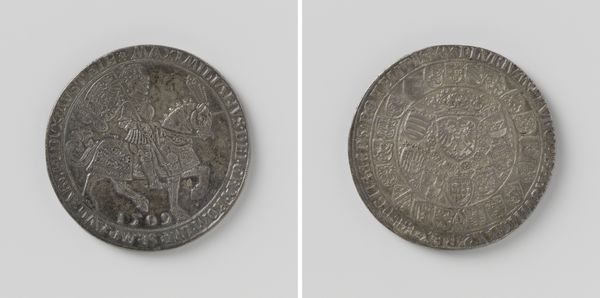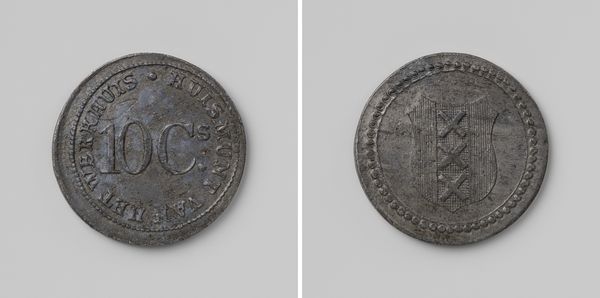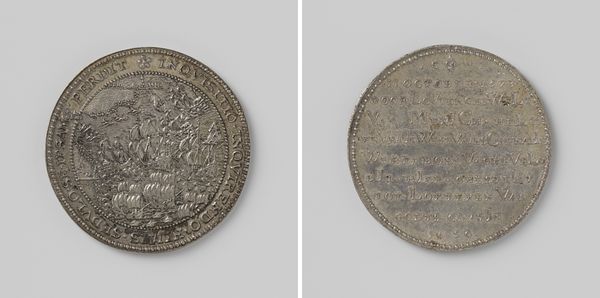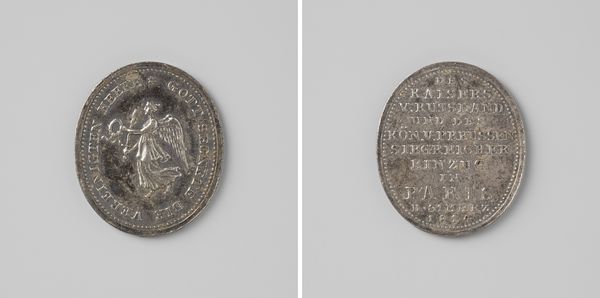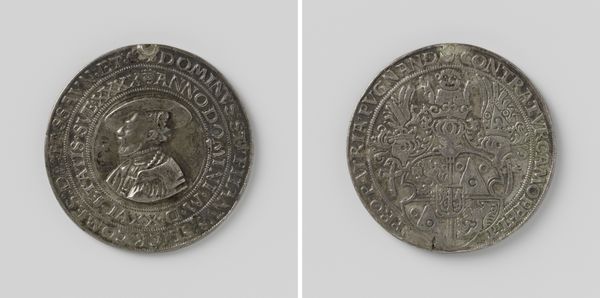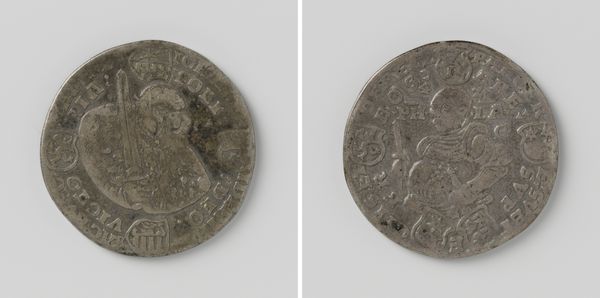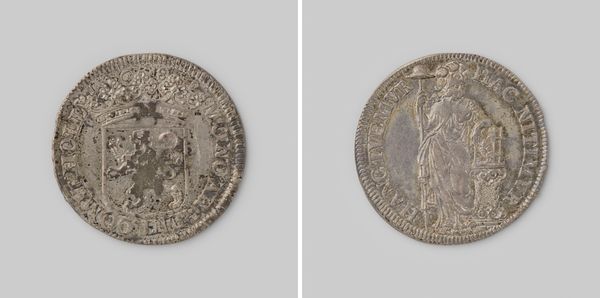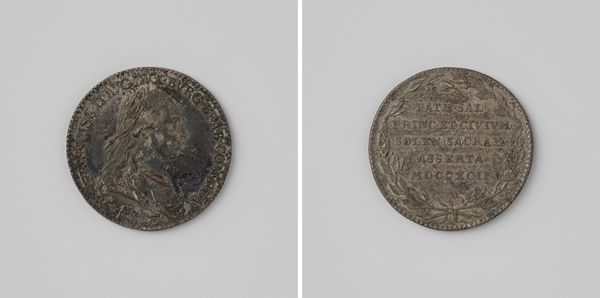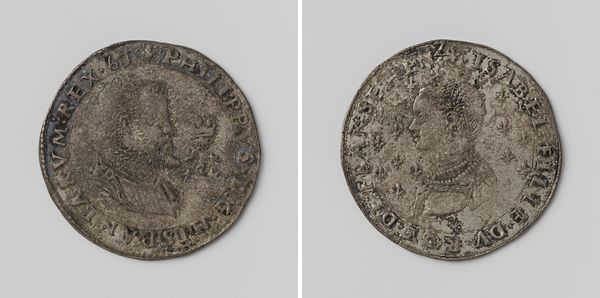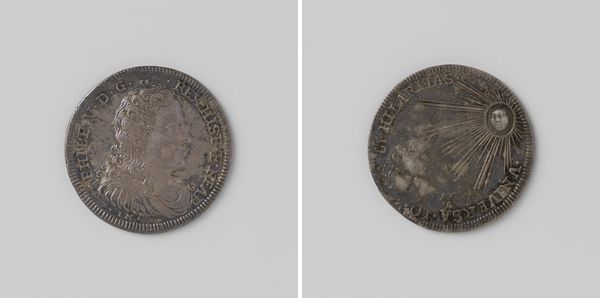
Elisabeth, dochter van Andreas, koning van Hongarije sticht de gasthuiskerk te Marburg en wordt daar begraven c. 1700 - 1850
0:00
0:00
metal, relief, sculpture, engraving, architecture
#
portrait
#
medieval
#
metal
#
sculpture
#
relief
#
sculpture
#
engraving
#
architecture
Dimensions: diameter 5 cm, weight 178 gr
Copyright: Rijks Museum: Open Domain
Curator: This compelling metal relief dates to somewhere between 1700 and 1850, depicting Elisabeth, daughter of Andreas, King of Hungary, founding the hospital church in Marburg, where she is buried. Editor: Immediately striking is its somewhat tarnished appearance, conveying a weightiness of history and perhaps loss. There is also something intriguing about its scale; it's an intimate piece rendering such a grand subject. Curator: Yes, that intimacy highlights how political power intertwines with religious devotion and gender. Elisabeth's agency in founding a hospital and being buried there presents an intersectional narrative of identity and leadership. It suggests a proactive role in shaping institutions within the medieval social fabric. Editor: It’s worth noting the social dynamics in play. The medieval period witnessed a particular politicization of women saints who founded institutions, bolstering social power for specific religious and political causes. Consider how these representations would reinforce certain ideals. Curator: Exactly, it presents opportunities to contemplate questions of gendered power and agency. Elisabeth is placed in proximity to structures of governance, where the Church intersected with matters of state and sovereignty, giving rise to ideological constructs around nobility and obligation. Editor: The piece certainly allows us to understand not only the depiction of power but also the institutionalization of such narratives within visual culture. How might its display shaped public understanding of charity, legacy, and divine sanction? Curator: That is so key. Consider how gender and power were not only depicted but operationalized through spaces like Marburg’s hospital church. How does that interplay speak to the function of institutions that both provided social support but also created power structures? Editor: We could see this almost as propaganda—although propaganda is loaded term–for divine right and maybe, by extension, justification for social hierarchies that, by modern standards, are abhorrent. Curator: Indeed. And maybe the power of such pieces resided in the way it obscured structural oppressions—sanctifying hierarchies of power in which individuals like Elisabeth participated, yet maybe also contested in their way. Editor: This work helps me appreciate the critical role of religious figures within evolving institutional power dynamics, particularly during the Middle Ages and beyond. Curator: It does allow a multilayered assessment where devotional symbolism met socio-historical and political implications.
Comments
No comments
Be the first to comment and join the conversation on the ultimate creative platform.
